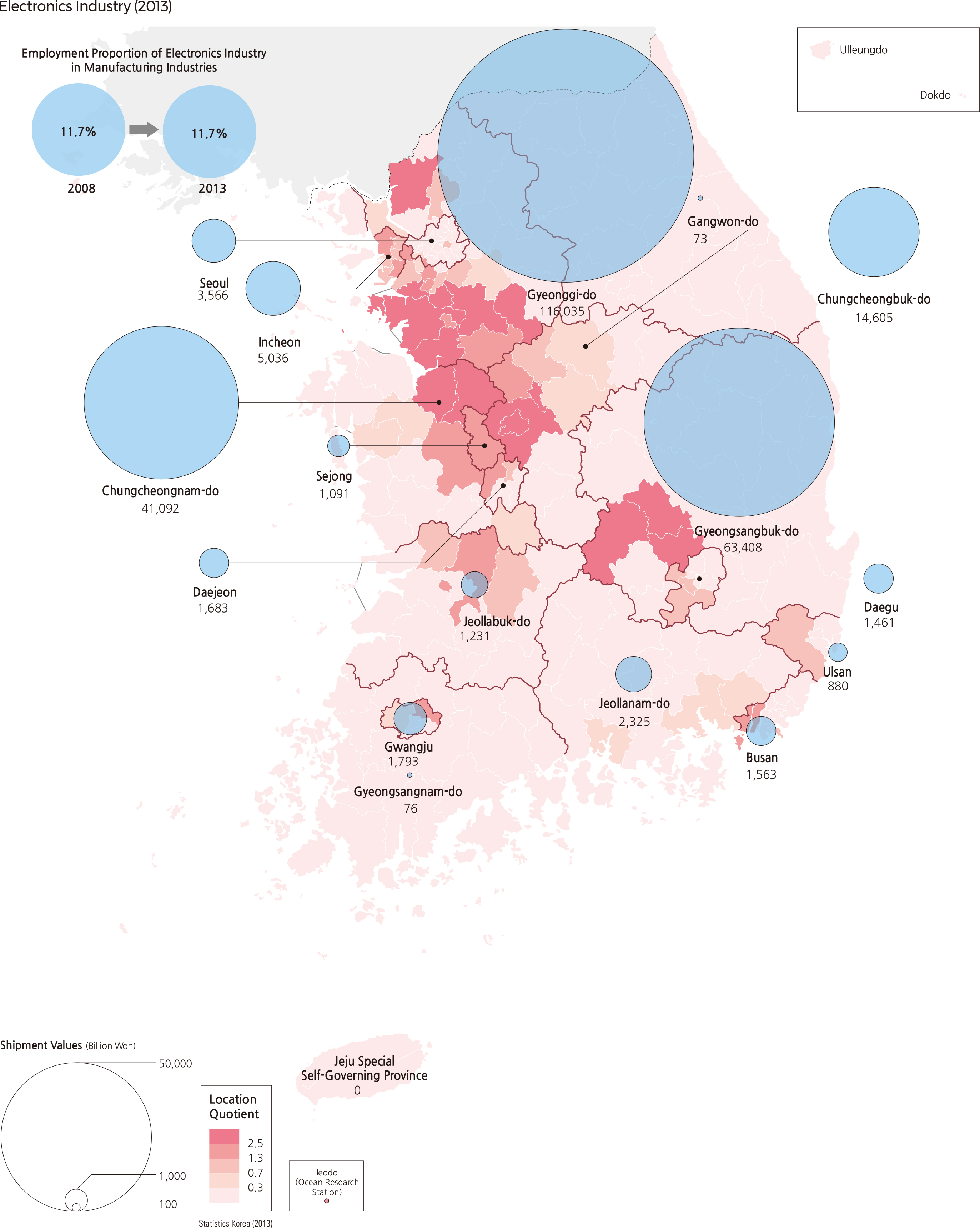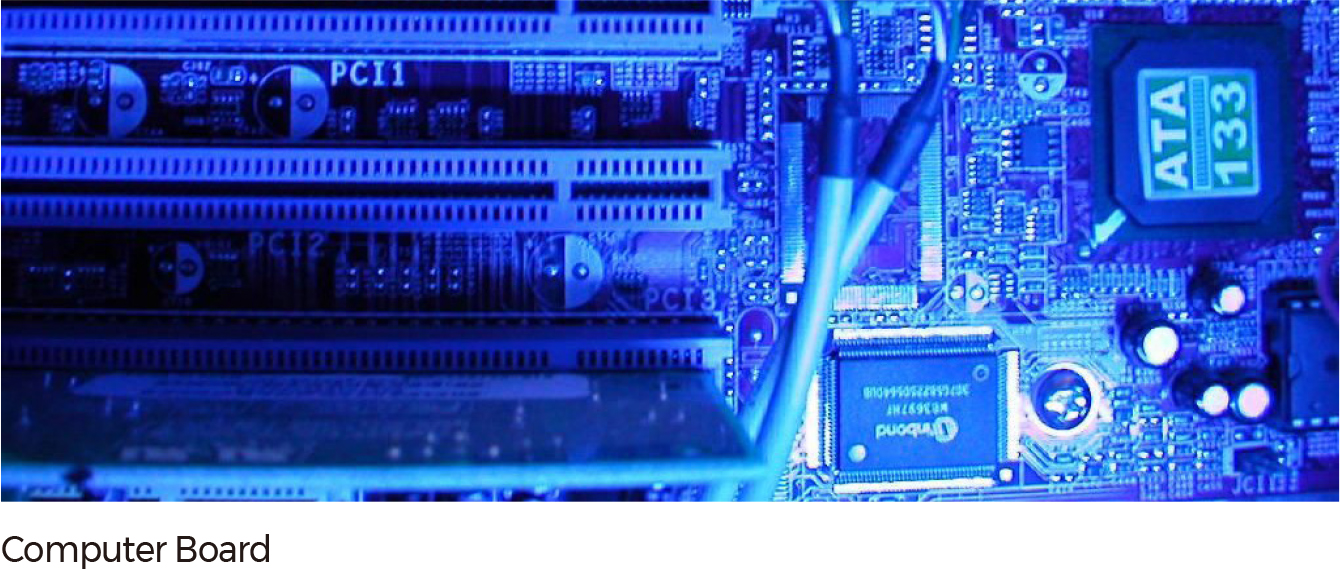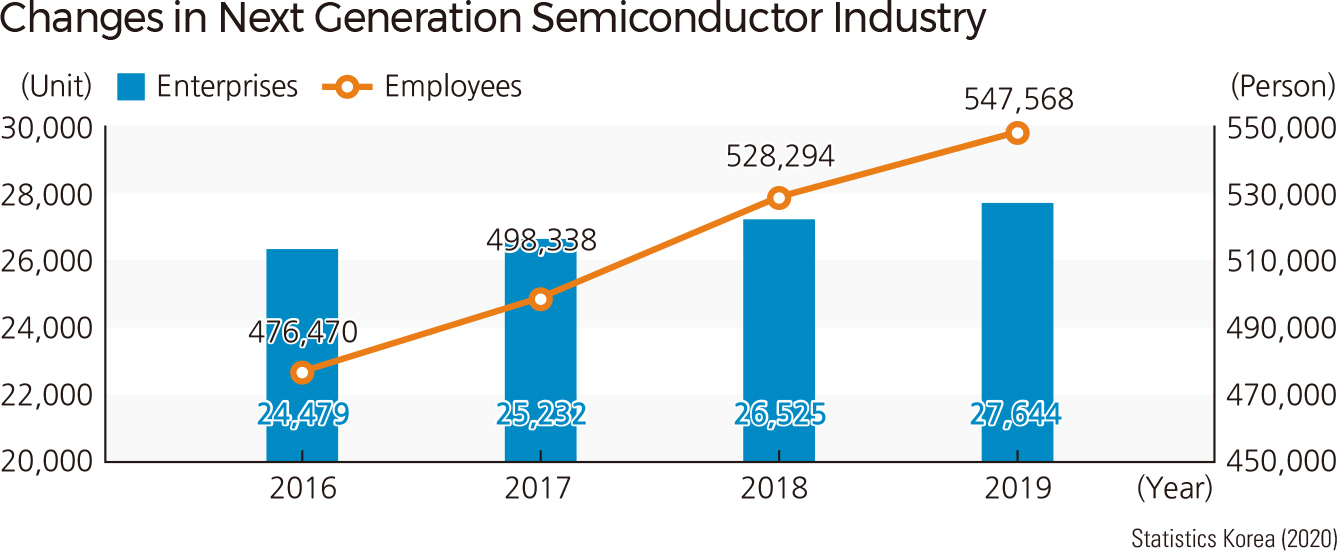Comprehensive Edition 2022
In the 1980s, the electrical and electronics industries, which centered on household electrical appliances as well as industrial products, were the driving force of the Korean economy. Major sectors were the household electronic appliance industry, semiconductor industry, computer and telecommunication industry, and electronic components industry.
These trends have continued. Location quotients for electronic industries (indices for quantifying how concentrated an industry is by location) indicate that the regional concentrations are clearly in Gyeonggi-do, Chungcheongnam-do, and Gyeongsangbuk-do. The dense concentration of this industry reflects economies of scale and associations old companies rely on and new firms use to grow. In many such high value product sectors, rapid communication contributes to success.
Communication and broadcasting apparatus includes wire communication such as mobile phones. The category mapped as “semiconductor manufacturing” includes electronic integrated circuits, diodes, transistors, and similar semiconductor devices. The next generation semiconductor industry designs and manufactures semiconductors that are used as cutting-edge core industries, such as artificial intelligence robots, virtual reality or augmented reality contents, autonomous vehicles, and next generation mobile communications. Subdivisions within the next generation semiconductor manufacturing sector are memory semiconductors, system semiconductors, semiconductor manufacturing processes and facilities, and semiconductor materials. |






